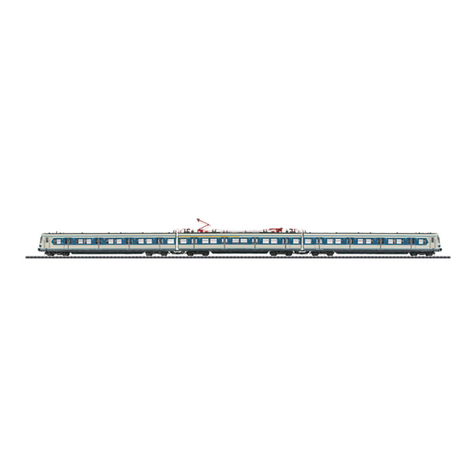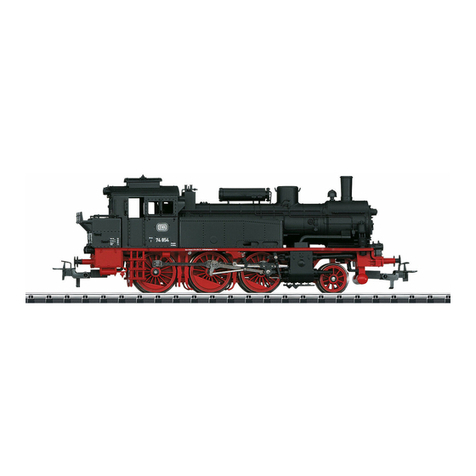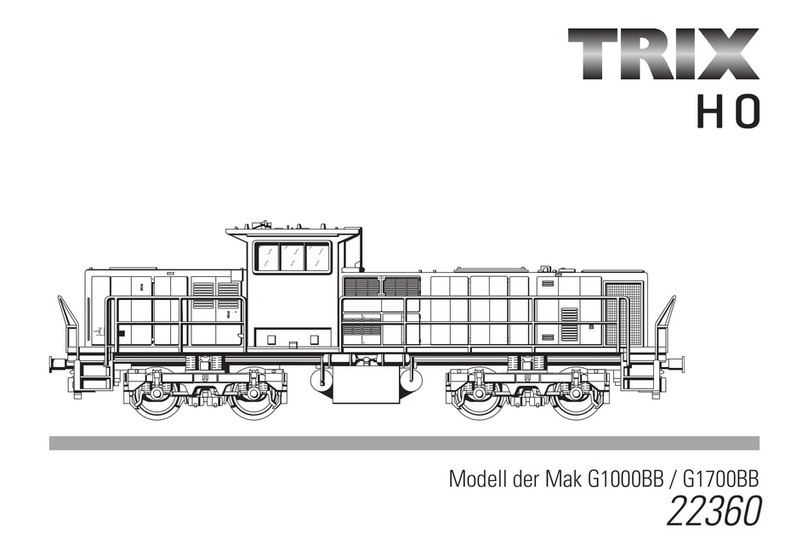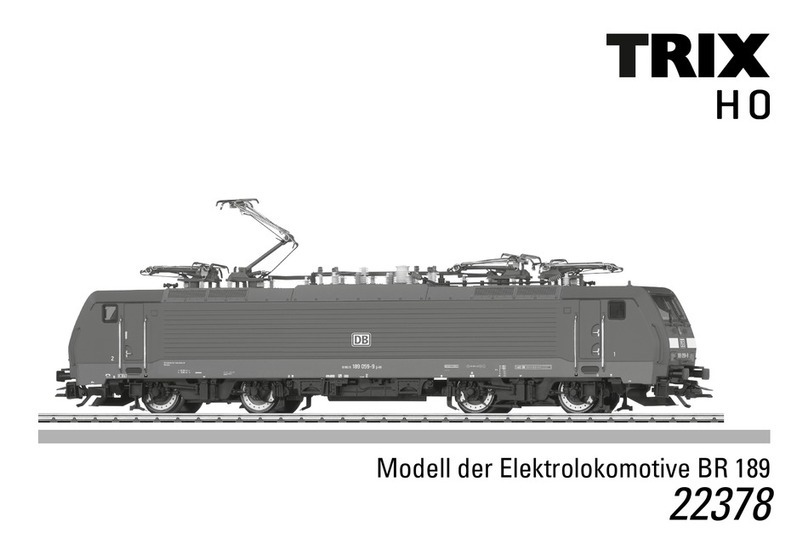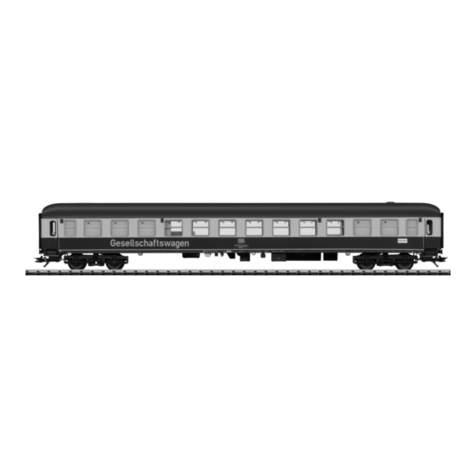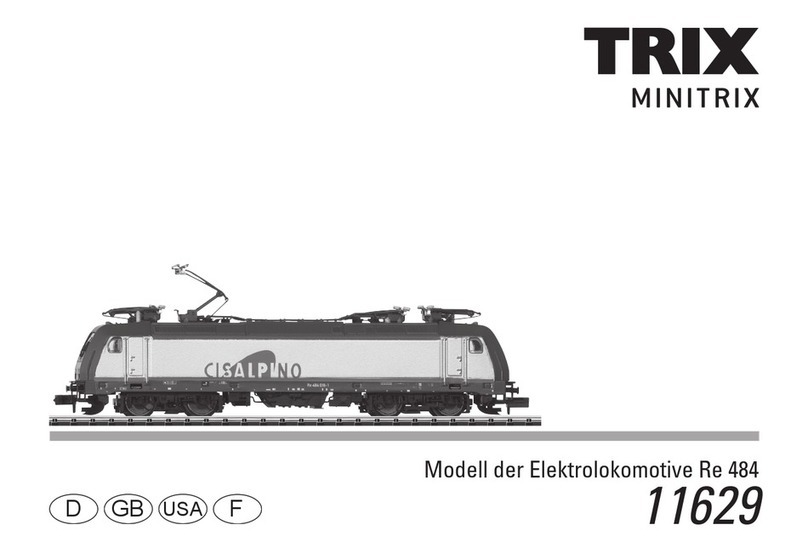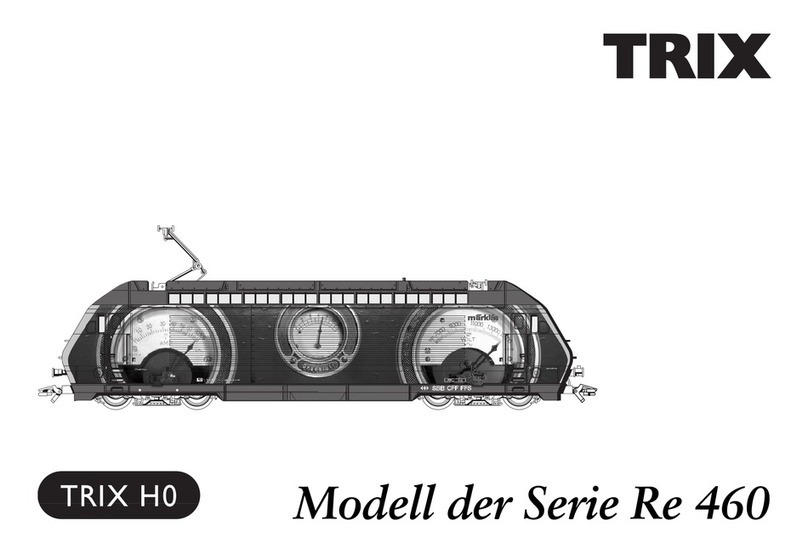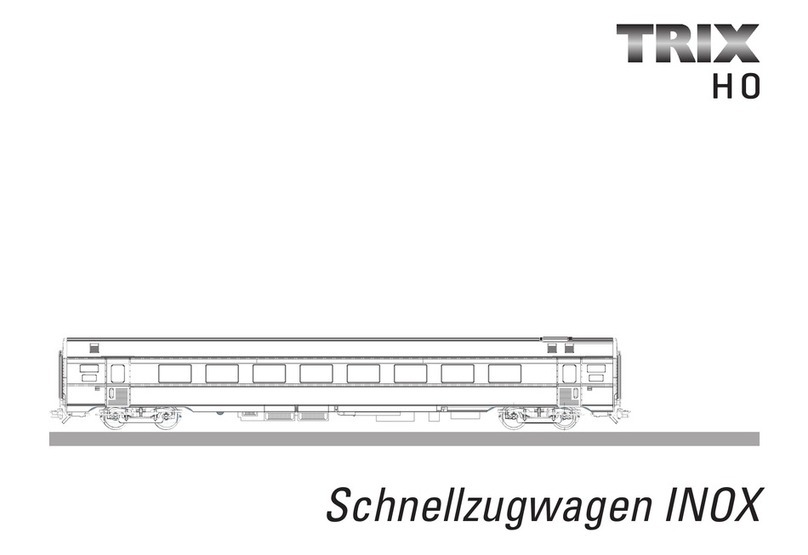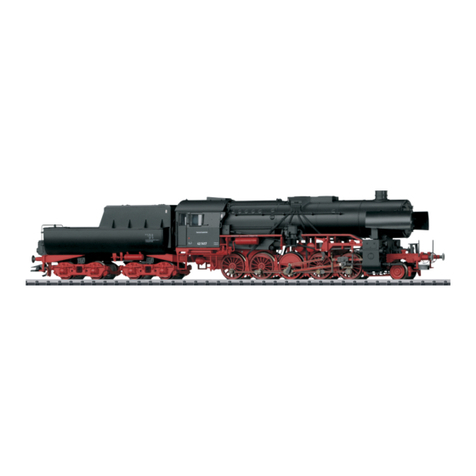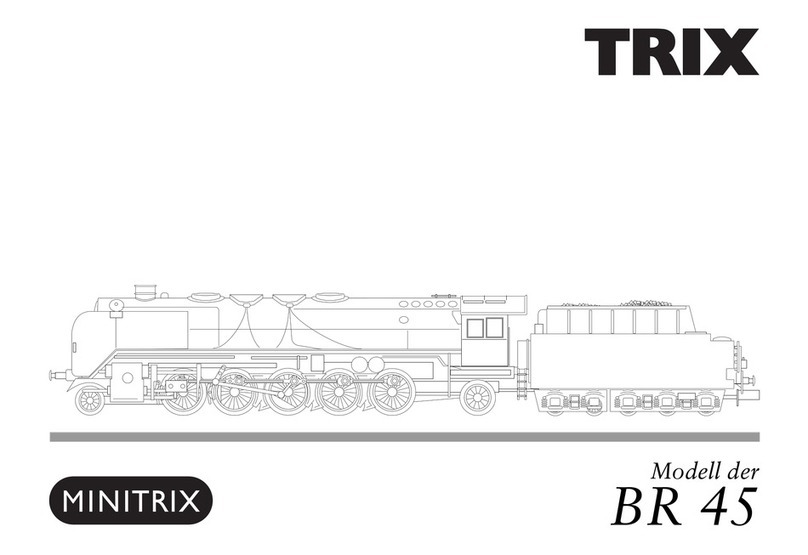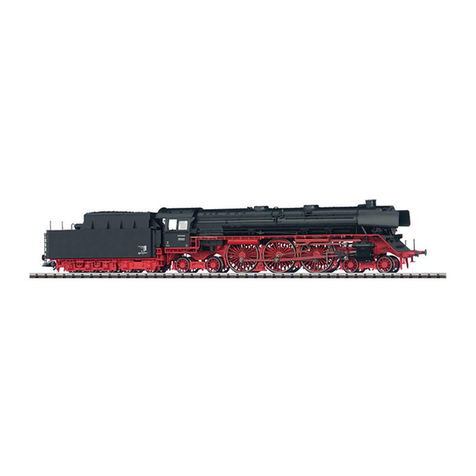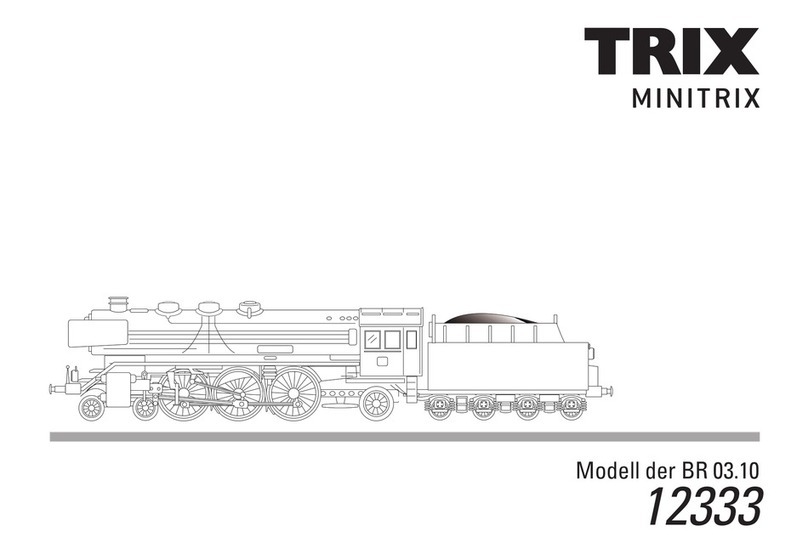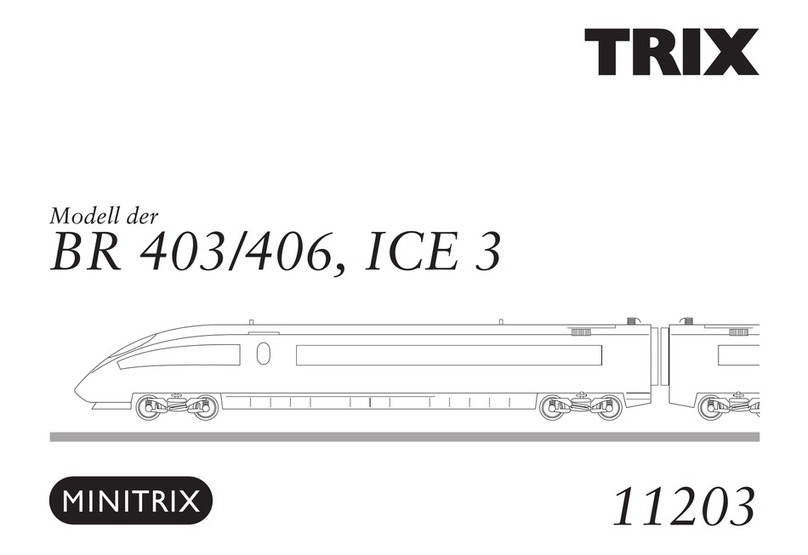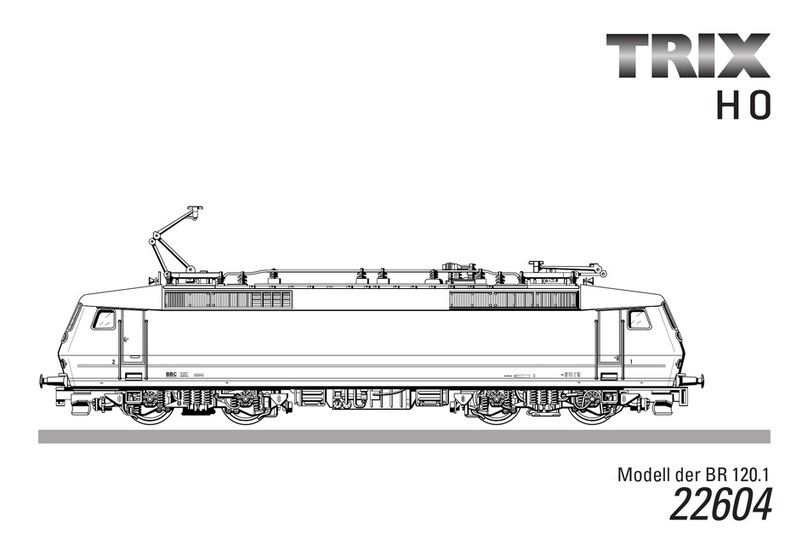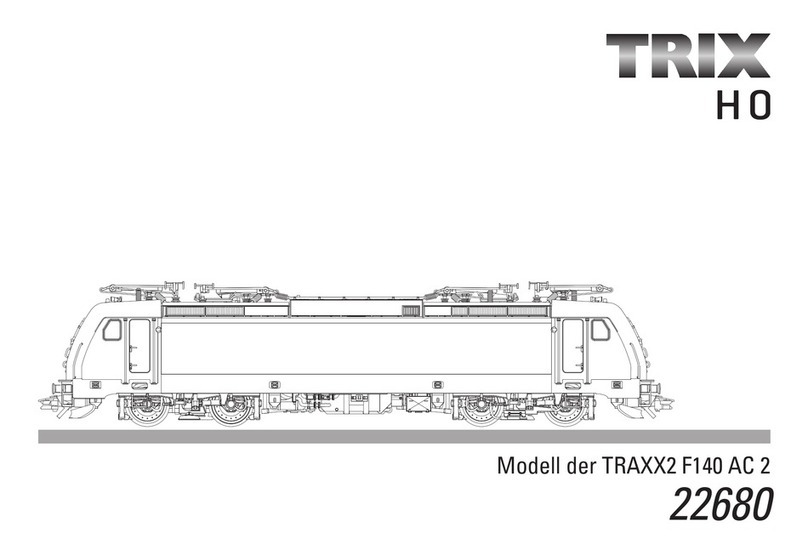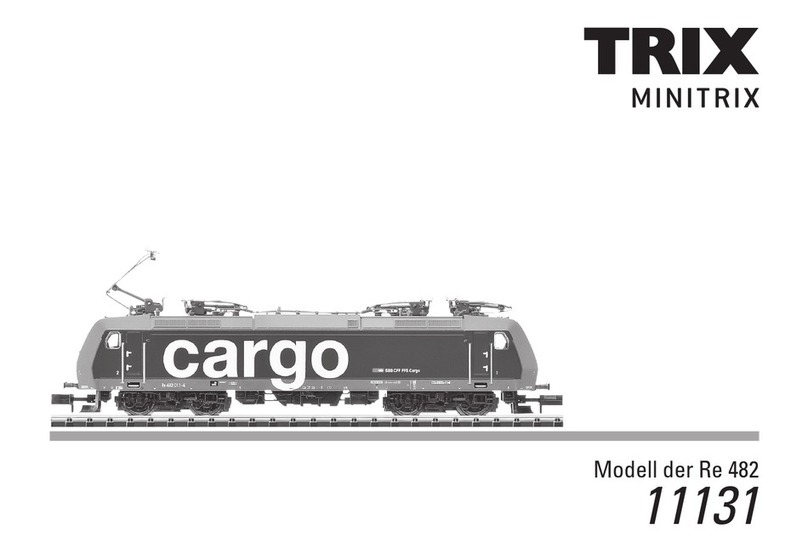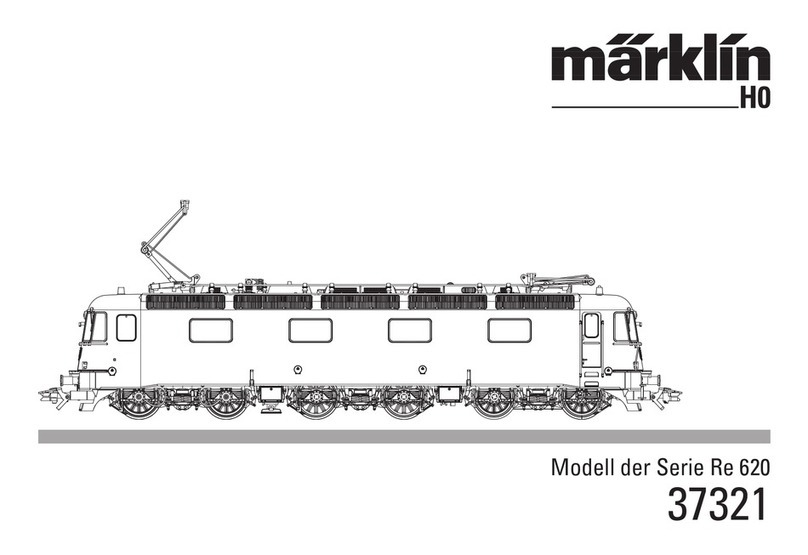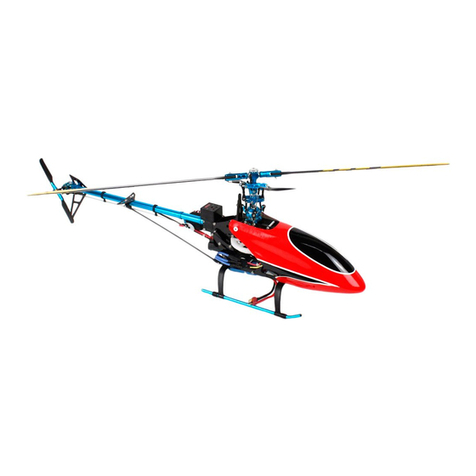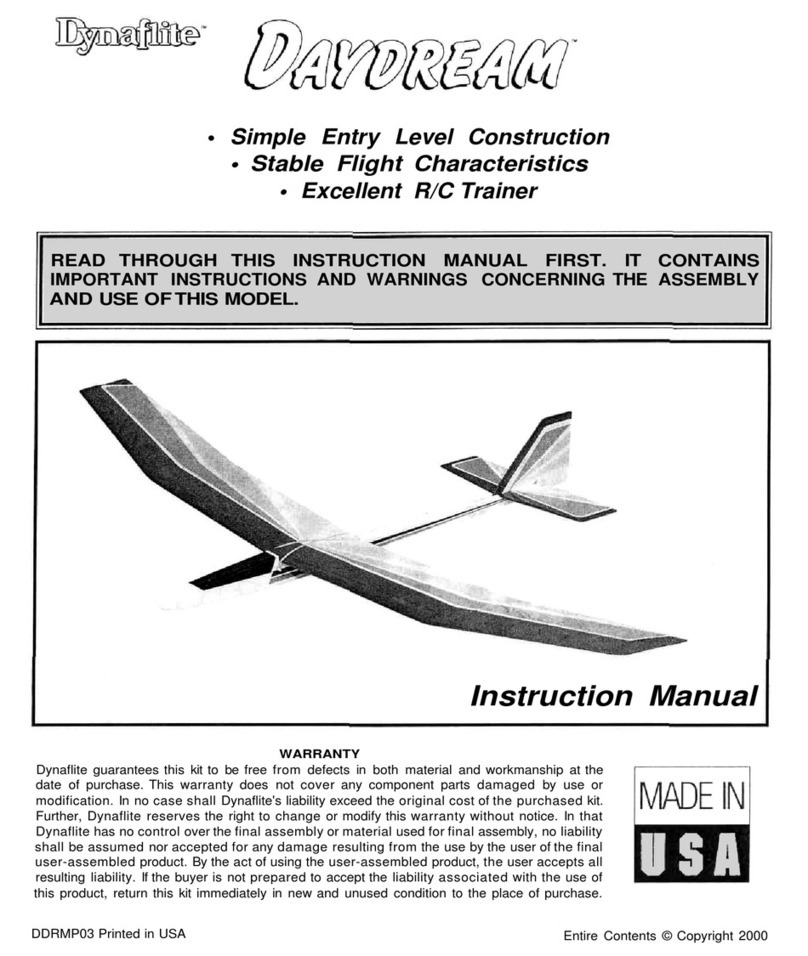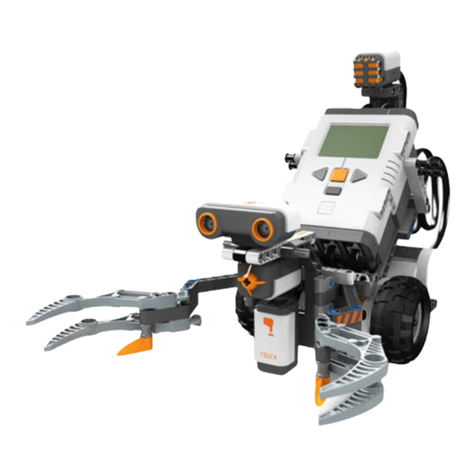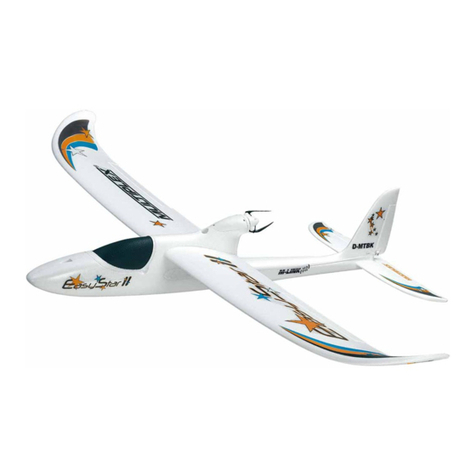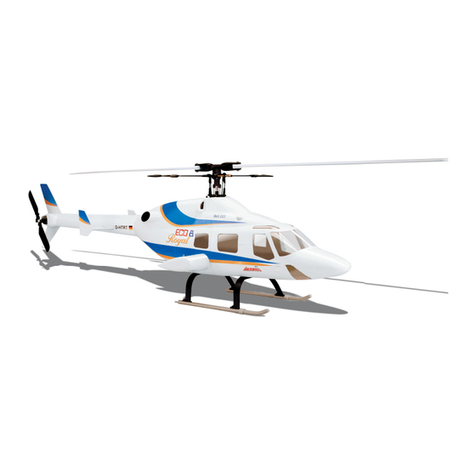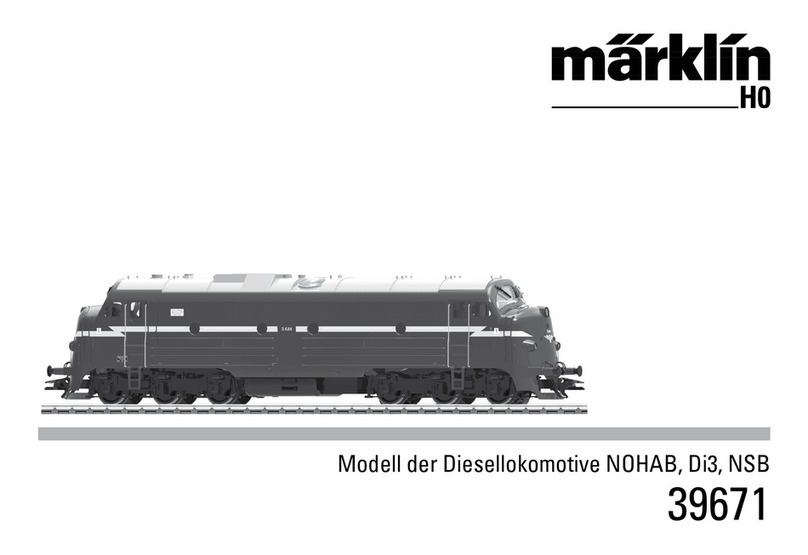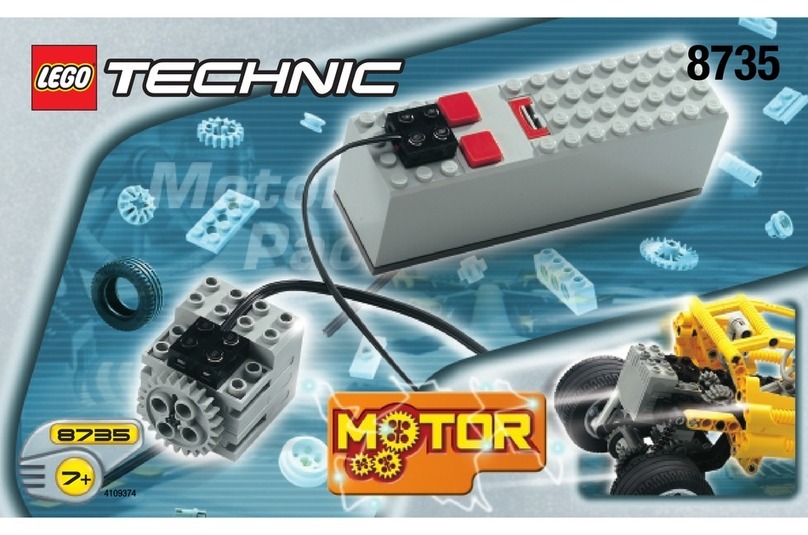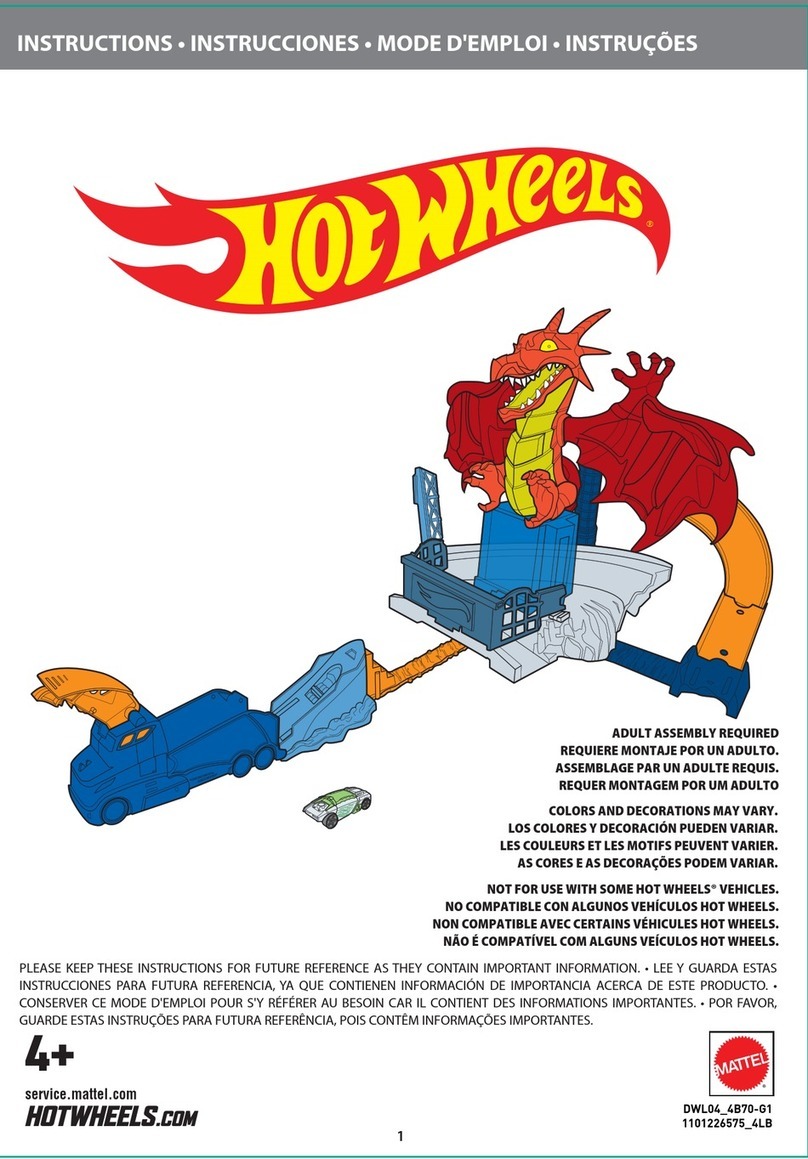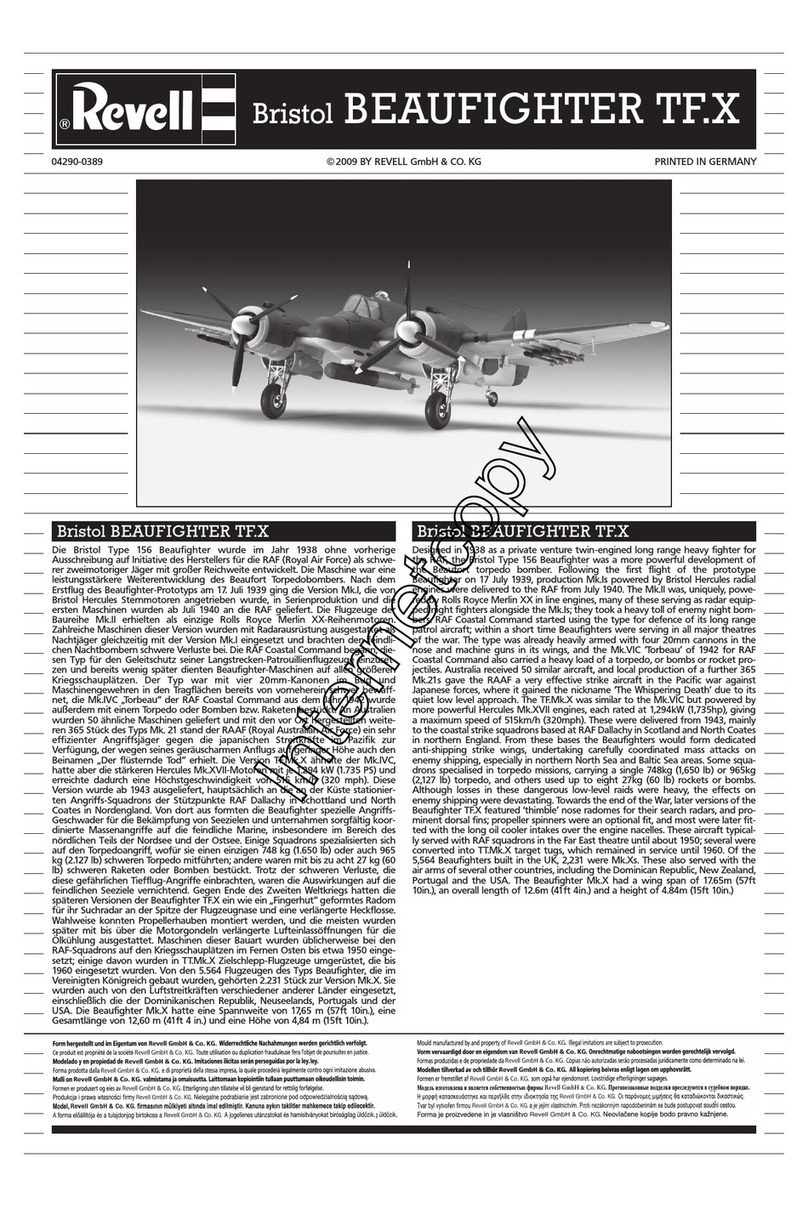4
Informations concernant la locomotive réelle
V 300 - Solitaire à 6 essieux.
S‘inspirant du succès de la V 200 de la Deutsche Bundesbahn,
la firme Krauss-Maffei construisit trois locomotives à six essieux
du type ML 2200 pour les chemins de fer yougoslaves. Probable-
ment dans l‘espoir d‘autres commandes, la firme prit l‘initiative
de construire une autre machine du même type, mais avec la
disposition d‘essieux CC comme loco de démonstration. Dans
une livrée d‘usine voyante, la locomotive fut présentée et pro-
posée entre autres à la Deutsche Bundesbahn. Après plusieurs
essais, la puissance du moteur de la loco put être augmentée
et la désignation interne de la machine devint ML 3000 C‘C‘.
Ce n‘est qu‘au bout de longues négociations que la Deutsche
Bundesbahn se laissa convaincre d‘acquérir le prototype et de
l‘incorporer à son parc sous l‘immatriculation V 300 001. Elle fut
dotée de l‘élégante livrée pourpre/gris de ses soeurs à quatre
essieux (par bogie) et fut essentiellement utilisée dans le service
de grandes lignes haut de gamme. En 1968, elle reçut le numéro
d‘immatriculation informatisé 230 001-0 et durant ses dernières
années de service, l‘imposante machine était visible entre Ham-
bourg et Westerland sur l‘ île de Sylt, où elle avait également
remorqué les trains populaires pour le transport d‘automobiles
entre Niebüll et Westerland. En 1975, la 230 001-0 fut garée et en
1977, la Deutsche Bundesbahn essaya sans succès de la vendre
en Italie. Elle revint en Allemagne dès 1978 et fut finalement
ferraillée deux années plus tard.
Informatie van het voorbeeld
V 300 - Eenling met 6 assen.
Op basis van de succesvolle V 200 van de Deutsche Bundesbahn
bouwde de firma Krauss-Maffei drie zesassige locomotieven
van het type ML 2200 voor de Joegoslavische Staatsspoorwe-
gen. Waarschijnlijk om meer opdrachten te verwerven, werd
een andere identieke machine met de asindeling C‘C‘ voor
eigen rekening als demonstratielocomotief geproduceerd. De
loc werd in een opvallende fabriekskleurstelling onder andere
aan de Deutsche Bundesbahn voorgesteld en aangeboden. Na
meerdere proeven kon het motorvermogen van de loc verhoogd
worden en werd ze intern als ML 3000 C‘C‘ aangeduid. Pas na
langere onderhandelingen kon men de Deutsche Bundesbahn
ertoe bewegen de eenling te verwerven en ze als V 300 001 in
het bestand op te nemen. Ze kreeg de elegante purperrood/grij-
ze kleurstelling van haar vierassige zusters en was voornamelijk
in de hoogwaardige sneltreindienst aan te treffen. In 1968 kreeg
ze het computernummer 230 001-0 en in haar laatste inzetjaren
kon de imposante machine tussen Hamburg en Westerland op
Sylt, waar ze ook de populaire autotreinen tussen Niebüll en
Westerland getrokken had, waargenomen worden. In 1975 werd
de 230 001-0 afgesteld en de Deutsche Bundesbahn probeerde
haar in 1977 naar Italië te verkopen, wat echter niet gelukte.
Reeds in 1978 kwam ze naar Duitsland terug en werd uiteindelijk
twee jaar later verschroot.
